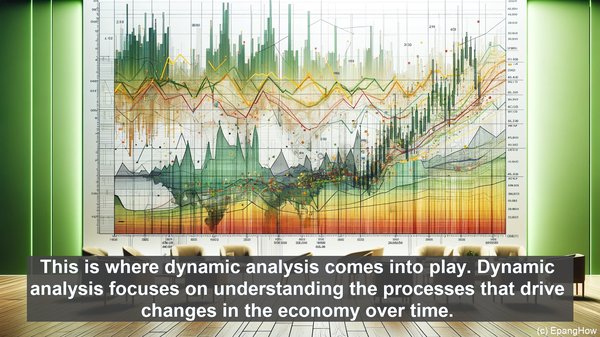Introduction: The Quest to Understand the Economy
Economics, at its core, is the study of how individuals, businesses, and governments make choices in a world of scarcity. It seeks to unravel the intricate web of interactions that shape the allocation of resources and the distribution of goods and services. To achieve this understanding, economists employ various analytical techniques, two of which are comparative statics and dynamic analysis.

Comparative Statics: Examining Equilibrium States
Comparative statics is a method that focuses on analyzing the economy at specific points in time, often when it is in equilibrium. Equilibrium, in this context, refers to a state where the forces of supply and demand, or any other relevant factors, are balanced. By examining the economy in equilibrium, comparative statics allows economists to study how changes in exogenous variables, such as government policies or technological advancements, impact the system. The key insight that comparative statics provides is the understanding of how these changes affect the equilibrium values of various economic variables, such as prices, quantities, and welfare measures.
Dynamic Analysis: Unraveling the Interplay of Cause and Effect
While comparative statics offers valuable insights into the impact of exogenous changes, it has its limitations. The real world is rarely static, and economic variables are in a constant state of flux. This is where dynamic analysis comes into play. Dynamic analysis focuses on understanding the processes that drive changes in the economy over time. It seeks to unravel the interplay of cause and effect, tracing the paths that variables take as they evolve. By employing tools such as differential equations or computer simulations, economists can model complex dynamic systems, capturing the feedback loops and non-linearities that often characterize economic phenomena.
When to Use Comparative Statics and Dynamic Analysis
The choice between comparative statics and dynamic analysis depends on the research question at hand. If the goal is to understand the long-term implications of a policy change or the evolution of an economic system, dynamic analysis is often more appropriate. It allows for a more nuanced understanding of how variables interact and how the system as a whole behaves. On the other hand, if the focus is on the immediate impact of a change or the short-run effects, comparative statics can provide valuable insights. It simplifies the analysis by assuming that the system quickly adjusts to the new conditions, reaching a new equilibrium.

